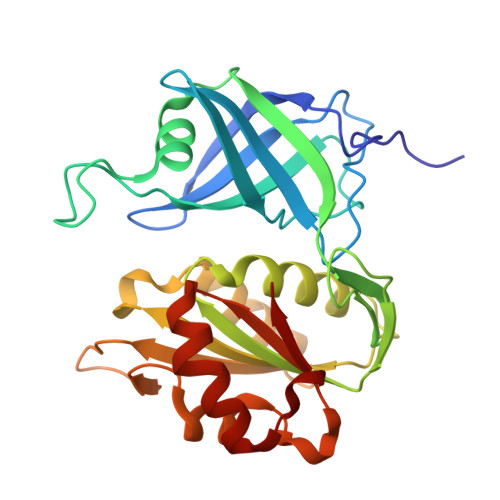Structural basis of hydride and proton transfer reactions revealed by the detection of hydrogen atoms in mammalian NADH-cytochrome b 5 reductase.
Hirano, Y., Kurihara, K., Kusaka, K., Ostermann, A., Hikita, M., Kimura, S., Miki, K., Tamada, T.(2025) Structure
- PubMed: 41172987
- DOI: https://doi.org/10.1016/j.str.2025.10.006
- Primary Citation of Related Structures:
9V69, 9V6A, 9V6B, 9V6C - PubMed Abstract:
Many structural studies have been reported for ferredoxin:NADP + reductase family members, but an experimental validation of the catalytic hydride and proton transfer steps through a direct detection of the involved hydrogen atoms has not been achieved so far. Here, we determined high-resolution X-ray and neutron crystal structures of NADH-cytochrome b 5 reductase, which acts as an electron supplier for various metabolic processes and mediates hydride and proton transfer reactions via its FAD and NADH cofactors. The X-ray structures identify the FADH - -NAD + and FAD-NADH complexes based on the electron densities of the hydrogen atoms bound to the cofactors. The neutron structures determined at different pD-values show a difference in the protonation state of the histidine residue in the hydrogen-bond network from FAD to the protein surface. The observation of the hydrogen atoms reveals the structural basis for the hydride and proton transfer reactions catalyzed by NADH-cytochrome b 5 reductase.
- Institute for Quantum Life Science, National Institutes for Quantum Science and Technology (QST), Inage, Chiba 263-8555, Japan; PRESTO, The Japan Science and Technology Agency, Kawaguchi 332-0021, Saitama, Japan; Center of Quantum Life Science for Structural Therapeutics (cQUEST), Chiba University, Inage, Chiba 265-8522, Japan. Electronic address: hirano.yu@qst.go.jp.
Organizational Affiliation:


















